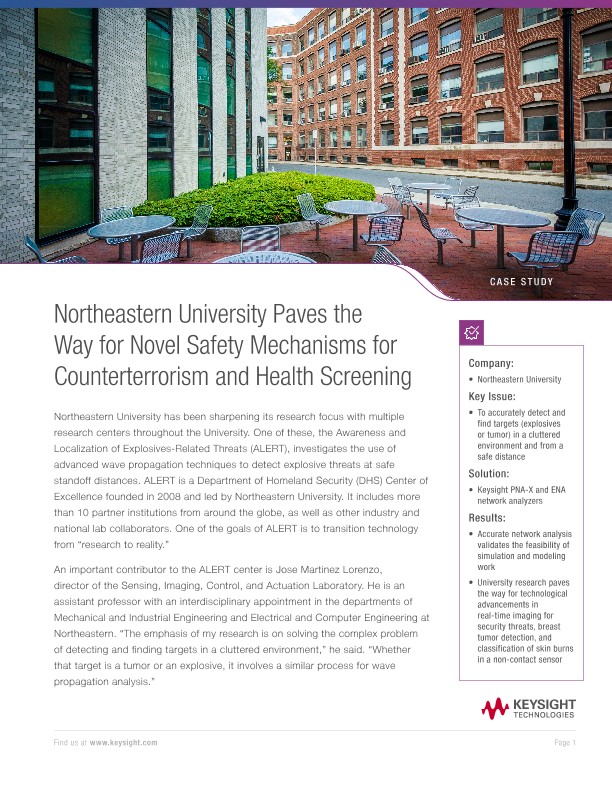Choose a country or area to see content specific to your location

Case Studies
Northeastern University has been sharpening its research focus with multiple research centers throughout the University. One of these, the Awareness and Localization of Explosives-Related Threats (ALERT), investigates the use of advanced wave propagation techniques to detect explosive threats at safe standoff distances. ALERT is a Department of Homeland Security (DHS) Center of Excellence founded in 2008 and led by Northeastern University. It includes more than 10 partner institutions from around the globe, as well as other industry and national lab collaborators. One of the goals of ALERT is to transition technology from “research to reality.”
An important contributor to the ALERT center is Jose Martinez Lorenzo, director of the Sensing, Imaging, Control, and Actuation Laboratory. He is an assistant professor with an interdisciplinary appointment in the departments of Mechanical and Industrial Engineering and Electrical and Computer Engineering at Northeastern. “The emphasis of my research is on solving the complex problem of detecting and finding targets in a cluttered environment,” he said. “Whether that target is a tumor or an explosive, it involves a similar process for wave propagation analysis.”
The lab takes a traditional three-tier approach to solving these problems. First, the detailed science is defined through computational models and novel signal processing algorithms. Next, a prototype is used to validate the fundamental science. Finally, a demonstration system is built to solve the problem in a realistic environment. In terms of the fundamental science, Dr. Martinez’s team uses polymodal data from electromagnetic, acoustic, and thermoacoustic waves to maximize the probability of cluttered environment threat detection and minimize the probability of a false alarm. “When the test results match the fundamental science simulation and modeling, it is extremely rewarding to know all the hard work paid off,” he said.
These techniques have broad applications in society. They can be used for realtime imaging for security threats, breast tumor detection, and classification of skin burns in a noncontact sensor, to name just a few. In addition to support from DHS, Dr. Martinez has received funding from the National Science Foundation (NSF) and the Defense Advanced Research Projects Agency (DARPA) to investigate wave propagation and how it can benefit these organizations’ missions and society as a whole. Imagine traveling through an airport where you no longer have to wait in line to walk through an individual scanning device. Instead, the entire walkway leading to the airport gates acts as a real-time security portal. Such an approach is possible and would undoubtedly make secure travel more comfortable and less intrusive.
When Dr. Martinez took a seven-month sabbatical at Northeastern from his home country of Spain, he didn’t realize that it would turn into a longer-term stay. Nine years later, he is running research efforts to overcome the tough engineering problems that may change the world and make it a safer place.
×
请销售人员联系我。
*Indicates required field
感谢您!
A sales representative will contact you soon.